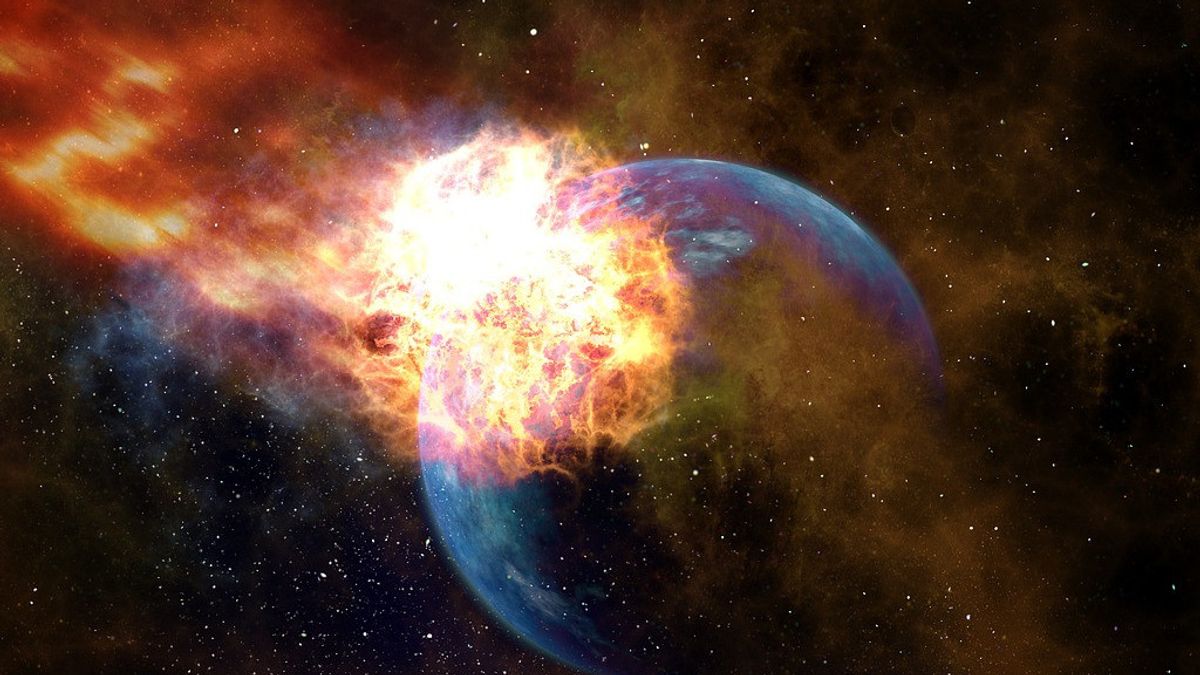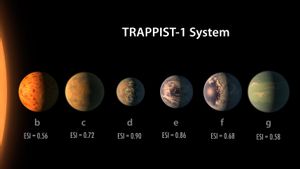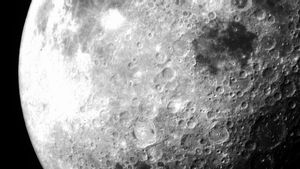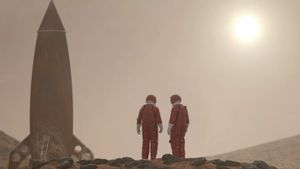
JAKARTA – A recent study states that the continents on Earth were formed when our planet was bombarded with giant meteorites about 3.5 billion years ago.
Researchers from Curtin University in Perth, Australia analyzed crystals of the mineral zircon from the Pilbara Craton to investigate its origin.
A craton is a piece of the planet's crust that has remained intact for billions of years, while other pieces have broken up and moved to form continents. The zircon composition reveals information about how the Pilbara Craton was formed.
They suggest the rock first melted near the Earth's surface before expanding deeper, consistent with the geological effects of the meteorite impact.
"Our research provides the first strong evidence that the process that eventually formed the continents began with the impact of a giant meteorite, similar to the one responsible for the extinction of the dinosaurs, but which occurred billions of years earlier," said Dr. Tim Johnson, from Curtin's School of Earth and Planetary Sciences.
During Earth's 4.5 billion year history, land masses have broken apart, washed away, and been pushed back together. It is the result of heat from radioactive processes in the interior of the planet that cause these plates to move.
However, the large and very strong part of the crust remains stable over time despite this process, known as cratoning.
SEE ALSO:
A new study from the Pilbara Craton, published this week in Nature, has provided evidence of how the structure formed and why it is so strong.
Geologists analyzed zircon crystals in the igneous rock of the craton, which is thought to have formed between 3.6 and 2.9 billion years ago.
"Studying the oxygen isotope composition in these zircon crystals reveals a "top-down" process that begins with melting of rock near the surface and progresses deeper, consistent with the geological effects of giant meteorite impacts," said Dr. Johnson.
Three types of oxygen isotopes - various forms of the element - found in zircon suggest that cratons formed in three stages.
The first stage was a giant impact about 3.6 billion years ago that destroyed part of the planet's crust, and consequently reduced pressure on the lower mantle.
This mantle then begins to melt and flows upward through the crust to form what is known as the 'oceanic plateau'.
The high temperatures at the base of the plateau result in the formation of granite, which is stable and has a low density; second stage.
In the final stage, the granite moves up with the magma and adds strength to the forming craton.
The oldest rocks are between 3.9 and 3.5 billion years old, which coincided with the Late Heavy Bombardment.
This occurs when a large number of smaller asteroids, up to 40 km wide, collide with the newly formed planets in the inner Solar System.
Researchers claim this is the strongest evidence yet of the decades-old theory that Earth's continents were formed by the impact of a giant meteorite.
This undermines competing theories that cratons formed as a result of ancient volcanic activity.
Dr Johnson said that understanding the formation and ongoing evolution of continents is critical, as humanity is so dependent on them.
They contain most of the Earth's biomass, all human and important mineral deposits.
"At the very least, the continent hosts important metals such as lithium, lead and nickel, commodities that are essential for the emerging green technologies needed to meet our obligations to mitigate climate change," said Dr Johnson.
The English, Chinese, Japanese, Arabic, and French versions are automatically generated by the AI. So there may still be inaccuracies in translating, please always see Indonesian as our main language. (system supported by DigitalSiber.id)















